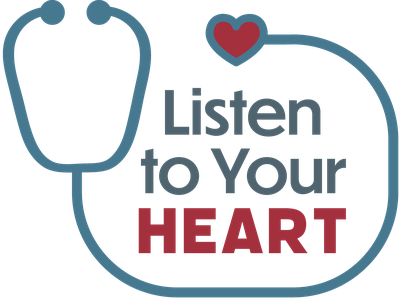
If you're young and otherwise healthy, you probably don't think too much about your cholesterol, a waxy substance that circulates in your blood.
But cholesterol statistics show more than 12 percent of adults over the age of 20 have high cholesterol (levels greater than 240 mg/dL), according to the Centers for Disease Control and Prevention, and 95 million adults have total cholesterol levels higher than 200 mg/dL, which is considered borderline high.
"It's easy to assume that high cholesterol is an older person's disease, but the reality is more and more folks are developing it in their 20s and 30s — especially if they have risk factors such as [having] overweight," says Suzanne Steinbaum, DO, a cardiologist in New York City and spokesperson for the American Heart Association (AHA).
Cholesterol 101
Cholesterol itself isn't a bad thing: "Your body needs it to build cells," Dr. Steinbaum says. There are two kinds of cholesterol you need to know about: Low-density lipoprotein (LDL, the "bad" type) cholesterol mixes with fat to build up in your arteries, and, over time, cause clogging and narrowing that can lead to a heart attack or stroke.
But there's also high-density lipoprotein (HDL or "good") cholesterol. This actually acts as a sort of "clean up" crew, scooping up LDL cholesterol and carting it out of your arteries.
"You can't just bank on the fact that your cholesterol levels are normal in your 20s, 30s and even 40s — if you don't keep up with heart-healthy lifestyle habits, you'll see it in your cholesterol later."
To complicate things even further, when doctors check your cholesterol levels, they also look at a third factor: triglycerides. "This is a type of fat, but it's important to know your levels, too. Elevated triglycerides can put you at an increased risk of heart attack and stroke," Dr. Steinbaum says.
In general, pre-menopausal women have higher levels of HDL cholesterol than men because the female sex hormone estrogen boosts it, Dr. Steinbaum notes. But around menopause, when estrogen levels plummet, most women see their total and LDL cholesterol rise and HDL cholesterol fall.
"That's why you can't just bank on the fact that your cholesterol levels are normal in your 20s, 30s and even 40s — if you don't keep up with heart-healthy lifestyle habits, you'll see it in your cholesterol later," she adds.
What Causes High Cholesterol?
Sometimes, you really can't help high cholesterol. Some people inherit genes from their parents that cause them to have high cholesterol — a condition called familial hypercholesterolemia that affects about 1 in 200 to 1 in 250 people (or around 0.5 percent of the population), according to the U.S. National Library of Medicine.
"Most of the time, lifestyle plays a huge role," stresses Lauri Wright, PhD, RDN, a spokesperson for the Academy of Nutrition and Dietetics and Chair of the Department of Nutrition and Dietetics at the University of North Florida. Some of the more common culprits include:
1. A Poor Diet
Adopting healthy eating habits is really the foundation of lowering cholesterol levels and can even help you avoid medication to lower your cholesterol," advises Wright.
In general, you want to limit foods rich in saturated fat such as red meat, butter, fried foods and full-fat cheese. "A lot of people are under the impression that eating saturated fat is OK now, because of the popularity of diets like paleo and keto," she explains. "What they don't realize is the initial drop in cholesterol you see with those diets is because people lose weight. Then, over time, because of the high amount of saturated fat, cholesterol levels can creep back up again."
The AHA recommends only getting about five to six percent of your calories from saturated fat each day. So if you eat 2,000 calories a day, only about 120 of them (or about 13 grams) should come from saturated fat.
Don't worry so much about foods that are high in cholesterol, such as eggs or shellfish. "These are good sources of protein and do not raise cholesterol much — saturated fat can affect cholesterol levels much more."
While you should shun saturated fat, you should also load up on good for you unsaturated fats, which can help lower LDL and triglyceride levels, says Wright. The AHA recommends eating fatty fish such as tuna, sardines and salmon at least twice a week to get heart-healthy omega-3 fatty acids. Other good sources include olive oil, nuts and seeds (Wright recommends aiming for about an ounce, or a small handful daily) and avocado.
Read more: How the DASH Diet Can Help Lower High Blood Pressure
In fact, people who had overweight or obesity ate an avocado a day for five weeks and were observed to have significantly lower LDL levels, according to an October 2019 Penn State study published in the Journal of Nutrition.
In general, aim to cook with olive oil or seeds oils such as sunflower, safflower and flaxseed oil. These are all linked to lowering LDL cholesterol, according to a large German analysis of 55 studies published in July 2018 the Journal of Lipid Research.
And don't worry so much about foods that are high in cholesterol, such as eggs or shellfish. "These are good sources of protein and do not raise cholesterol much — saturated fat can affect cholesterol levels much more," explains Wright.
Here's exactly how your diet affects your cholesterol levels.
It's also important to choose good carbs (fiber) over not-so-great ones (added sugar).
High-fiber foods such as fruits, veggies, beans and whole grains because soluble fiber, specifically, helps remove cholesterol from the body. Case in point: People who were given psyllium fiber supplements in addition to a statin saw reductions in their LDL cholesterol levels that were equivalent to doubling their statin dosage, per an October 2018 meta-analysis published in The American Journal of Cardiology.
And drinking at least one sugary beverage (hello, soda) every day was associated with a 98-percent higher chance of developing low HDL and a 53-percent higher chance of developing high triglycerides, according to a February 2020 study in the Journal of the American Heart Association.
2. Having Overweight or Obesity
Having overweight or obesity can both increase bad cholesterol (LDL) and triglycerides and lower good cholesterol (HDL), according to the AHA.
But you don't have to lose too much weight to see positive effects: Dropping just five to ten percent of body weight was observed to lead to a significant reduction in both LDL levels and triglycerides, according to a September 2016 study published in Translational Behavior Medicine. It's worth noting, though, that greater weight loss was associated with even greater cholesterol improvements.
3. Staying Sedentary
While being a couch potato can affect your cholesterol and triglyceride levels, it plays an especially strong role with your HDL. And remember: HDL is the good cholesterol that can help lower LDL, the bad guy.
"I explain to my patients that there really is no magic food or medication that can raise your HDL," says Wright. "But the one thing that has been shown to elevate it is exercise." In fact, people who exercised 30 to 60 minutes a day were observed to have HDLs that were about 4 points higher than those who were less active, an August 2015 study published in the journal Lipids & Health Disorders found.
How to Tell if You Have High Cholesterol
Unlike other medical conditions, there are no signs or symptoms of high cholesterol.
"The only way to know for sure is to see your doctor and get a blood test," Dr. Steinbaum says. The AHA recommends all adults over the age of 20 get their cholesterol checked every four to six years. (If it's abnormal, or you have other risk factors such as having overweight, high blood pressure or type 2 diabetes, you'll need to get checked more frequently.) In general, your numbers should be:
- Total cholesterol: 125 to 200 mg/dL
- LDL cholesterol: Less than 100 mg/dL
- HDL cholesterol: 40 mg/dL or higher for men; 50 mg/dL or higher for women
- Triglycerides: Less than 150 mg/dL
Don't bother with home cholesterol tests, which usually only measure total cholesterol, instead of breaking down LDL, HDL and triglycerides. "Getting your cholesterol checked by your doctor is a better bet because the test is likely to be simpler, neater and less painful than those designed for home use — and more likely to be covered by insurance," Dr. Steinbaum says.
If your results are elevated, your doctor should repeat the test a few weeks later, since certain things like stress or illness can affect it, Dr. Steinbaum notes.
Don't ignore borderline numbers: If your cholesterol is considered borderline — defined as total cholesterol between 200 mg/dL and 240 mg/dL and/or an LDL between 100 mg/dL and 130 mg/dL — don't just blow it off.
If your numbers are borderline, the best way to try to treat them is to focus on lifestyle changes such as eating a healthy diet, exercising and losing weight. "Most of the time, we start seeing changes after about six weeks."
One August 2018 study published in the medical journal Circulation followed more than 36,000 people under the age of 50 for more than two decades, and observed that those with borderline high LDL were more likely to die from heart attacks and strokes than those with the lowest LDL levels. "Even if you're relatively young and healthy, with no other risk factors, if your LDL cholesterol is creeping up, you're at higher risk," Dr. Steinbaum stresses.
If your numbers are borderline, the best way to try to treat them is to focus on lifestyle changes such as eating a healthy diet, exercising and losing weight.
"Most of the time, we start seeing changes after about six weeks," Dr. Steinbaum says. But if your numbers aren't showing a positive trend, or if you don't see a change after about four to six months, talk to your doctor about possibly starting a cholesterol-lowering medication such as a statin.
Both the American College of Cardiology and AHA recommend that people who have other risk factors for heart disease — such as a family history of heart disease, diabetes, high blood pressure or having overweight or being a smoker — and whose ten-year risk of a heart attack is 7.5 percent or higher (you can check yours here) begin statin therapy.
Read more: 11 Simple Ways to Keep Your Heart Healthy and Strong
Is this an emergency? If you are experiencing serious medical symptoms, please see the National Library of Medicine’s list of signs you need emergency medical attention or call 911.
